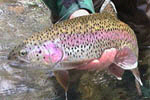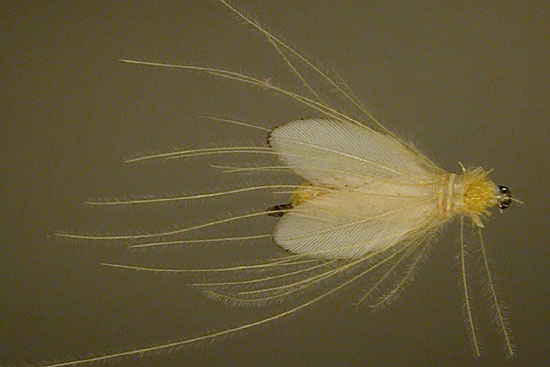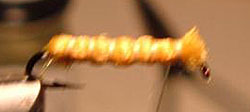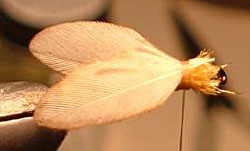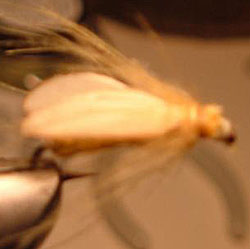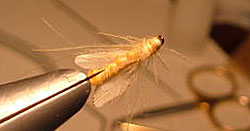|
Flies With a
Story #75
|
The Flytier: Fred Bridge of York, PA |
| Once a professional tier, now that Fred is retired he restricts his tying to flies for himself, friends and family. Fred is an active supporter of a number of PA Trout Unlimited Chapters. He enjoys presenting slide shows of trips to Yellowstone Country, New York's Salmon River, and New Zealand's North Island, to conservation and fishing groups. |
|
Read Fred's
other stories: |
|
The Crane Fly, as patterned and tied by Fred Bridge |
|
|
Photo by Peter Frailey
|
|
"I skittered it in the area where I had seen a fish slurp a real fly, and had two trout attach it...." |
|
|
Last year, in late March, while fishing the Yellow Breeches, there was quite a bit of midge and "micro" stuff flying about but no trout working on them. Here and there among those flies were some larger bright yellow bugs which at first glance appeared to be caddis flies. Wing movements were somewhat similar and they were skittering on the surface laying eggs. Finally, one came flying by within a foot or two of me and I was able to see the "daddy long legs" hanging down and trailing back well past the body. The light went on and "Crane Fly" popped into my head.
Some years ago I tied a dry
version of a wet/nymph style given to me by Ronn Lucas.
Fortunately, I had one with
me, tied it on, skittered it in the area where I had
seen a fish slurp a real fly, and had two trout attack
it, one of which I hooked. I landed six fish that
morning before losing the fly on a frayed or weakened
spot on the tippet and a much too hard strike.
Now, I always have a few
with me in the late March to late May time period. I was
rewarded a couple weeks ago on the Breeches and had a
really good morning. For some reason, skittering works
much better for me than does a dead drift.
I have observed these flies
in many area streams, and from what I have read they are
present across the country. The larva crawl into the mud
along the edge of the stream where they transform to the
flying insect. They mate, lay eggs, and die.
My pattern and tying
technique are shown below. I hope you have equal success
with it.
-
Fred Bridge
|
|
copyright © Notice by fishingwithflies.com. All rights reserved. This material is for your personal enjoyment. Please obtain prior written permission from the author and fishingwithflies.com before any other use. |
